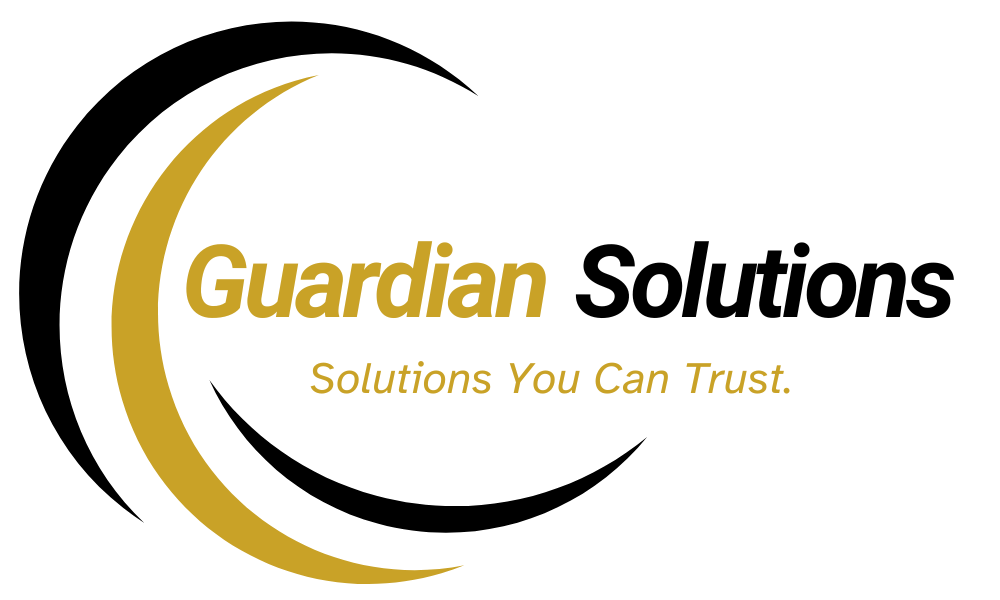Grants: Unlock Funding for Your Goals

Want to achieve big goals without debt? Grants provide grant funding and financial assistance to help you. They offer free money for starting a business, education, or community projects. This article will guide you from understanding grants to submitting a winning application.
Key Takeaways
- Grant funding is free money that doesn’t need to be repaid.
- Thousands of funding opportunities exist for education, businesses, and community initiatives.
- Successful applicants follow clear steps to find the right grant programs.
- Applying requires preparation but is achievable with the right strategy.
- Every rejection brings lessons to improve future applications.
Understanding Grants: Free Money for Your Dreams
Grants are financial awards that help people achieve goals without needing to pay the money back. Think of them as free grant money for education, starting a business, or community projects. Let’s break down how they work and why they’re different from other options.
What Exactly Are Grants?
Grants come from governments, organizations, or charities. For example, federal grants like Pell Grants help students, while state grants might fund local businesses. The catch? You must use the money for the stated purpose—no repayment required.
How Grants Differ from Loans and Other Funding
- Grant vs Loan: Grants don’t require payback, unlike loans that charge interest.
- Scholarships vs Grants: Both are free, but scholarships often target students while grants cover broader goals.
Unlike venture capital, grants don’t demand equity in your project. The key is eligibility—you must meet criteria like income limits or project focus.

Types of Grants Available in the United States
Explore these categories to find your fit:
- Federal grants: Offered by agencies like the SBA for small businesses.
- State grants: Check programs in your state for housing or education.
- Private foundation grants: Organizations like the Bill & Melinda Gates Foundation fund innovation in healthcare or education.
Remember: Grants aren’t “free money” without rules. You must follow guidelines to qualify and use funds correctly. Start exploring options today to see which fit your goals!
Who Qualifies for Grant Funding?
Grant eligibility rules change a lot, depending on the program. To get grants, you need to meet certain criteria set by the funders. First, check if your goals match the funder’s mission. Nonprofits need 501(c)(3) status, while small businesses focus on startups or specific industries.
- Nonprofit grants look for groups working on education, health, or community issues. Make sure your mission fits theirs.
- Small business grants go to entrepreneurs in certain areas or industries, like green energy. They often ask for proof of local impact.
- Individuals might get grants for education, arts, or research. There are income limits or where you live.
Grant criteria also look at diversity. They often help women-led businesses, veterans, or those in rural areas. For example, the USDA gives grants to farmers in certain places. Educational grants, like Pell Grants, use income and if you’re enrolled to decide if you qualify.
Don’t think you can’t get a grant without checking! Many qualifying for grants depends on matching the funder’s goals. Look at Grants.gov or agency websites for chances that fit you. Each grant has its own rules—so, take time to read them well.
Finding the Right Grant Opportunities
Unlocking grants starts with knowing where to look. Grant search tools make it easier, connecting you to opportunities that match your goals. Start by checking Grants.gov, the main spot for federal grants. Also, look at state portals for local grants.
Government Grant Databases and Resources
Federal grants are often easy to find. Visit Grants.gov to see thousands of options. Also, check agency sites like NEA for arts grants or NIH for health research.
State websites, like California Grants Portal, list local local grants. Use filters to find grants that fit your needs.
Private Foundation Grants
Private foundation grant databases like Foundation Directory Online and Guidestar highlight opportunities. Look for grants from organizations like the Bill & Melinda Gates Foundation. Find grants that match your project’s mission.
Many foundations focus on underfunded areas or specific fields.
Industry-Specific Grant Programs
| Industry | Key Organizations | Focus Areas |
|---|---|---|
| Healthcare | National Institutes of Health | Medical research, patient care |
| Education | Gates Foundation | Scholarships, STEM programs |
| Environment | NRDC | Climate initiatives, conservation |
Industry grants are found in specific areas. Tech startups might look at NSF grants. Educators can check DonorsChoose for classroom funding.
Local and Community-Based Funding Sources
- Community foundations like the Cleveland Foundation fund local projects
- Check city economic development offices for small business grants
- Local businesses sometimes sponsor community grants (e.g., Starbucks College Achievement Plan)
Local libraries and chambers of commerce often list local grants not found online.
The Grant Application Process: A Step-by-Step Guide
Applying for grants can seem overwhelming, but breaking it down makes it easier. This guide will walk you through each step. You’ll learn how to handle everything from documents to follow-ups smoothly.
| Step | Action | Key Considerations |
|---|---|---|
| 1 | Organize Documents | Collect organizational info, project details, and support letters |
| 2 | Write Proposal | Show need, goals, and sustainability in grant proposal writing |
| 3 | Budget Planning | Align costs with funder priorities using grant budget templates |
| 4 | Submit & Follow Up | Meet grant deadlines and use grant submission tips to avoid errors |
First, gather essential documents. This includes your organization’s profile, project details, team bios, and support letters. Keep everything in digital folders for easy access. Here are some examples:
- Nonprofit 501(c)(3) certification (if applicable)
- Financial statements from past years
- Community impact statements
Writing a grant proposal needs clarity and persuasion. Show the unique value of your project. Include sections like:
- Needs statement: Explain the problem your project solves
- Methods: Describe how you’ll achieve your goals
- Evaluation: Mention how you’ll measure success
“A strong proposal tells a story that aligns with the funder’s mission,” advises a federal grant officer.
Budgets must be accurate and transparent. Use templates to organize your costs into categories like personnel, materials, and overhead. Avoid common errors:
- Don’t overestimate indirect costs
- Include in-kind contributions
Keep track of deadlines with a shared calendar. Create a timeline that works backward from the deadline, leaving extra time for revisions. Here are some tips for submitting:
- Double-check formatting and page limits
- Confirm receipt within 48 hours of submitting
By following this guide, you can turn complex steps into manageable tasks. Even if you’re new to grants, success is possible with patience and preparation.
Top Strategies to Make Your Grant Application Stand Out
To make your grant application a successful grant proposal, do more than just follow the rules. Grant reviewers look for clear goals, a match with their mission, and clear results. Use these grant writing strategies to stand out:
- Align with funder values: Learn about the grantor’s past projects and goals. Show how your project fits with theirs.
- Show, don’t tell: Use facts, testimonials, and community feedback to show need. Numbers are more convincing than words.
- Highlight your track record: Share your past work, partnerships, and grant successes. This builds trust in competitive grant applications.
- Use visuals wisely: Use charts, timelines, and maps to explain complex ideas. A clear budget overview makes your plan easy to understand.
“We reject 70% of applications for unclear goals or mismatched priorities.” — National Grant Review Panel
Think like a grant reviewer by asking: Does this application explain why this cause, why your team, and what lasting change? Avoid complicated language and keep sentences brief. Follow these grant application tips to make proposals that connect, not just meet requirements. Every detail should support your case as the funder’s best partner.
Common Grant Application Mistakes to Avoid
Getting grant funding often depends on avoiding simple but key errors. Many grant application mistakes come from not paying attention, rushing, or not understanding the rules. Learning from failed grant proposals can help you grow.

Red Flags That Get Applications Rejected
Reviewers watch out for things like missed deadlines, incomplete forms, or projects that don’t match what funders want. Here’s how to dodge grant rejection reasons:
- Ignoring eligibility criteria
- Skipping budget justifications
- Submitting incomplete (e.g., missing resumes)
- Overly vague project descriptions
- Formatting errors in PDFs or online forms
How to Recover from a Rejection
Turn rejection into growth by asking for grant application feedback. Many funders give written or verbal advice. A nonprofit director said:
“We revised our proposal after feedback and secured funding on the second try.”
Whenresubmitting grants, tackle each critique. Make your proposal clearer, with stronger data and realistic timelines. Being persistent often pays off—80% of grants are awarded on the second try, says the National Grantmakers Association.
Every “no” brings clarity. Focus on improving your approach instead of seeing setbacks as failures. Funders value applicants who learn and adapt.
Success Stories: Real People Who Secured Life-Changing Grants
Grants have changed lives, from starting businesses to improving communities. Grant success examples show dreams can come true. With the right plan, anyone can win a small business grant or get an educational grant.
Business Startup Success Stories
Entrepreneurs across the country have made their dreams real with grants. A Texas tech firm, owned by a veteran, got an SBA grant. They created 20 jobs with it. A farm in the Midwest used USDA grants to start an organic delivery service. It now serves five states.
These small business grant winners show how important it is to match proposals with what funders want.
Educational Grant Transformations
Grants have opened doors for students. Maria, a first-generation college student, got an engineering degree thanks to grants. A teacher in Denver got a grant for a STEM lab. It engages over 300 students every year.
Testimonials highlight the key to success: staying persistent, setting clear goals, and making a difference in the community.
Community Project Funding Wins
Thanks to community grant projects, communities are better. In Chicago, a neighborhood got a HUD grant for a green park. It cut pollution by 30%.
A food bank in rural Alabama grew after winning a Walmart Foundation grant. It now helps 5,000+ families. As one recipient said in a grant testimonial, “This funding wasn’t just money—it was hope.”
Beyond Traditional Grants: Alternative Funding Sources
Looking beyond traditional grants can lead to new ways to fund your projects. Consider alternative funding options like crowdfunding on sites like Kickstarter or GoFundMe. Here, people directly support your ideas.
Startups without nonprofit status can partner with established groups through fiscal sponsorship. This lets the partner handle the paperwork and access grants. Small projects can also get help from micro-grants from groups like ArtPlace America. And, matching grants from companies like Google’s Impact Challenge can double your donations.

“Combining crowdfunding with fiscal sponsorship can create powerful funding ecosystems,” says a 2023 nonprofit report on hybrid funding models.
Here’s how to use these methods together:
- Crowdfunding campaigns get more attention through social media and personal stories.
- Micro-grants from local arts councils or tech accelerators need less paperwork.
- Work with companies offering matching grants during their giving campaigns to increase your impact.
Prize competitions like NASA’s Space Apps Challenge offer cash and resources for innovative ideas. For local efforts, fiscal sponsorship through networks like Fractured Atlas lets people donate tax-deductibly without needing a 501(c)(3) status. Combining these approaches can make your funding strategy stronger, turning “no” into “next step.”
Conclusion: Your Path to Grant Success Starts Now
Your journey to grant funding starts with knowledge. First-time applicants can achieve their goals with the right resources. Use guides from the Small Business Administration or Lumina Foundation’s tools to begin.
Explore government databases like Grants.gov or private platforms like GrantWatch. Find opportunities that match your mission.
Don’t go it alone. Seek help from grant writing assistance programs or consulting firms. Community colleges and Grant Professionals Association members can guide you. Use budget templates and proposal checklists to stay organized.
Every rejection brings you closer to success. Use feedback to improve your approach. Follow success stories to stay motivated.
First-time applicants often succeed by staying organized. Use free webinars from the National Grant Writers’ Association. Keep track of deadlines and review eligibility criteria.
Take action today. Visit grant portals like Foundation Directory Online. Or, take online courses from Coursera or Udemy to improve your grant writing skills.
The grant funding journey requires effort, but it can change lives. Start small by downloading a template or attending a workshop. With persistence and the right resources, your vision can become a reality.
FAQ
What types of projects can be funded through grants?
Grants support many projects. These include educational programs, research, and community development. They also help with business startups and personal growth. It’s key to find a grant that matches your project’s goals.
Are there grants specifically for minority-owned businesses?
Yes, there are grants for minority-owned businesses. These grants help diverse entrepreneurs start or grow their businesses. They often focus on specific industries or community impact.
How do I find local grant opportunities in my community?
Local grants can be found through community foundations and economic development offices. Nonprofit organizations in your area also offer them. Networking and attending community meetings can help you find these opportunities.
What are some common mistakes to avoid when applying for grants?
Don’t miss deadlines or submit incomplete applications. Make sure your project fits the funder’s priorities. Be specific about your project’s goals. Always review the application guidelines carefully.
Can I apply for multiple grants at the same time?
Yes, you can apply for several grants at once. But make sure your projects align with each funder’s guidelines. Manage your time and resources well to meet each grant’s requirements.
How long does the grant application process typically take?
The time it takes to apply for a grant varies. It depends on the grant type and the organization. It can take weeks to months to prepare, write, and gather documents.
What should I include in my grant proposal?
A good grant proposal includes a project overview and a clear need statement. It should have defined objectives, a detailed budget, and an evaluation plan. Tailor your proposal to match the funding organization’s priorities.
Are there any grants for personal development or educational purposes?
Yes, there are grants for personal development and education. These include scholarships, fellowships, and tuition grants. They support various educational paths, from college degrees to vocational training.
What should I do if my grant application is rejected?
If your application is rejected, see it as a chance to learn. Ask for feedback to understand why it wasn’t accepted. Use this feedback to improve your future applications and keep looking for funding.


